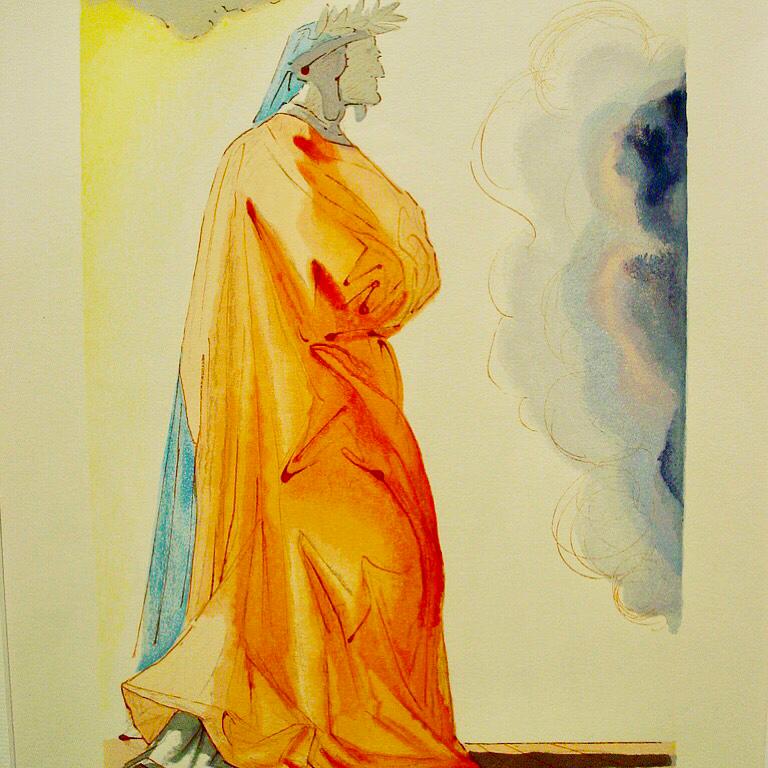
Italy is marking the 700th anniversary of the departure of Sommo Poeta — the Great Poet, Dante Alighieri (1265 Florence-1321 Ravenna), and his masterwork, The Divine Comedy. He wrote this monumental epic at the age of 35 when he was exiled from his hometown of Florence to spend the rest of his life in Ravenna, until his death.
In this timeless book, Dante sets out on a voyage to the other world where souls embark upon terminating life on earth. Depending on their merit earned on earth, they were to reside in one of these realms : Inferno, Purgatorio, or Paradiso – hell, interworld, and heaven, respectively. As he passes through each realm, he sees the souls placed in different degrees of suffering and happiness determined as a consequence of one’s conduct, of vice and sins committed, and of the virtues attained during one’s life on earth.
Dante’s guides in this spellbinding voyage are Virgil , the wise one who leads him through Inferno and Purgatorio; and Beatrice, Dante’s mystical childhood love who died at an early age who represents the face of Divine love. She guides him across the stages of Paradiso up to the Empyrean, the station of Divine Essence.
On departure from the Earth, the souls who are destined to go to Inferno are greeted by Charon, the boatman whose duty is to take them across the river Acheron to the gates of Inferno.
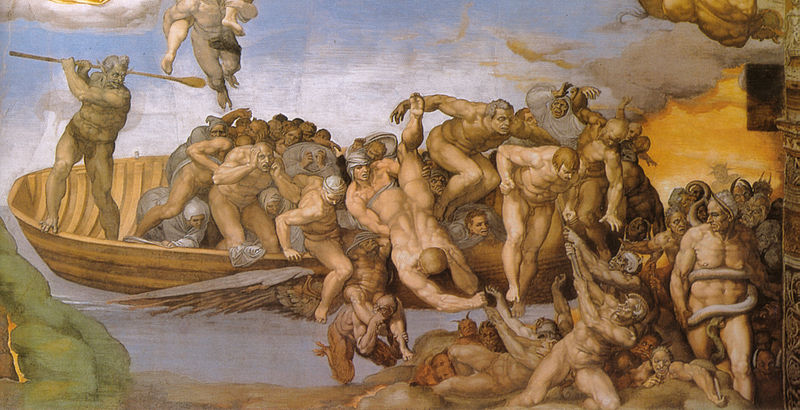
Virgil and Dante at the gates of hell gazing across in search of a way to go past the three gatekeepers : the leopard, the lion and the wolf; representing lust, pride and greed respectively.
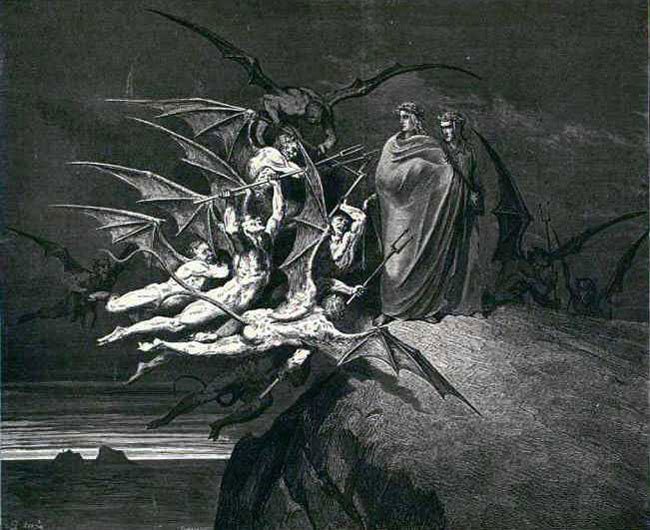
The circles of Inferno differ in types and magnitude of affliction determined in accordance with the sins and the “bad” acts committed by the inhabitants during their earthly life.
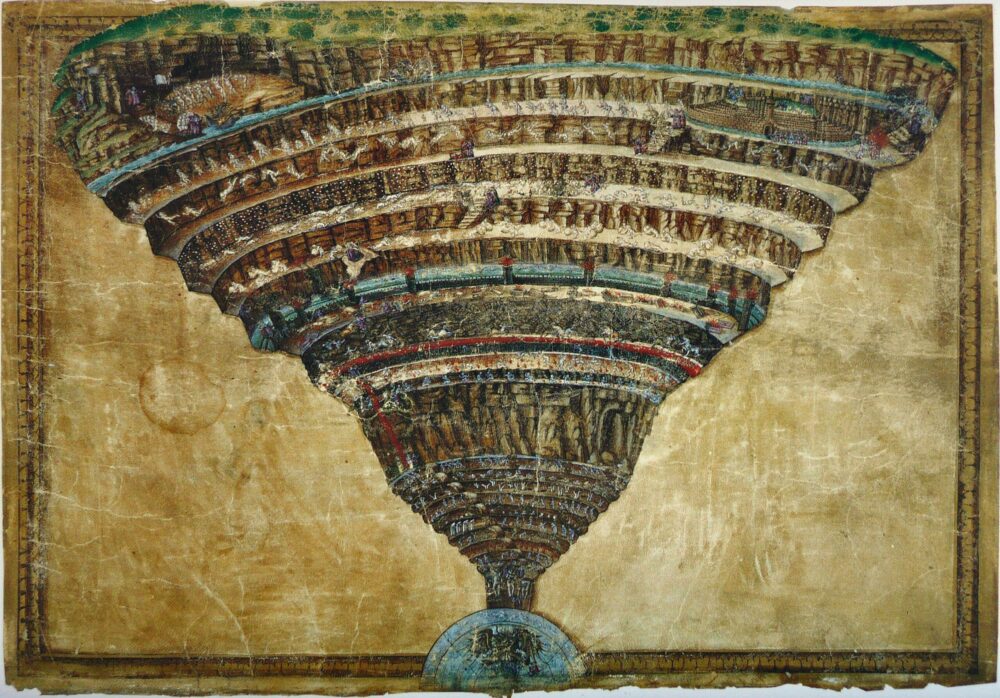
The circles of Inferno :
1st circle : pagans, worshippers of imaginary gods and their leaders
2nd circle: sexually promiscuous
3rd circle: the greedy and the gluttons
4th circle: thieves and spendthrift wasters
5th circle: the conceited, arrogant and angry ones
The gates of lower hell, the city of Dis
6th circle: heretics, soothsayers, sorcerers
7th circle: violence; the violent ones against nature, property, body, murderers, tyrants, the blasphemous, perverts, suiciders
8th circle: fraud and corruption; false prophets, hypocrites, fraudulent advisors, politicians, seducers, flatterers, swindlers
9th circle: treachery; traitors to family and friends, to guests, to law, to country and to God.
10th circle is the center point of the earth: the evil –Lucifer (Satan) who was originally created with the highest intelligence but was rejected from heaven because of his rebellion and pride.
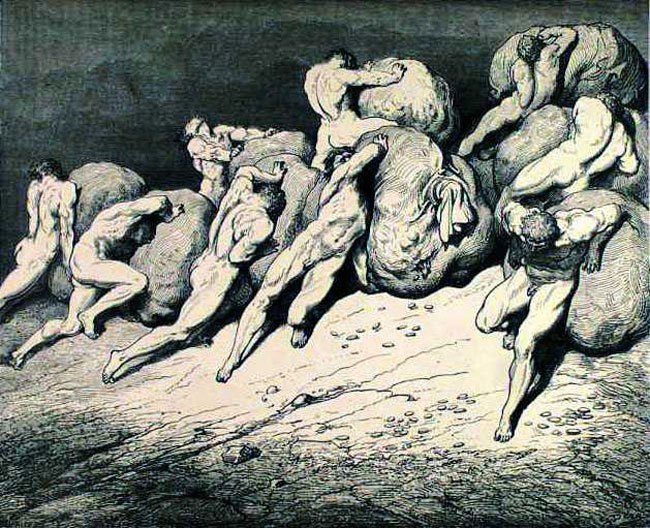
The next realm after Inferno is Purgatorio which is the intermediate realm of lucid consciousness of the state of the soul and its purification from the worldly mistakes and sins. The profound sensations of remorse and love prevail the spheres of Purgatorio, and there remains hope for gaining back the dignity of the soul.
The redeemed souls who finish their educational term in Purgatorio and who become eligible to leave, wash off the remnants of their misdeeds and remorseful pain in the river Lethe, and pass on to the stage they merit in Paradiso.
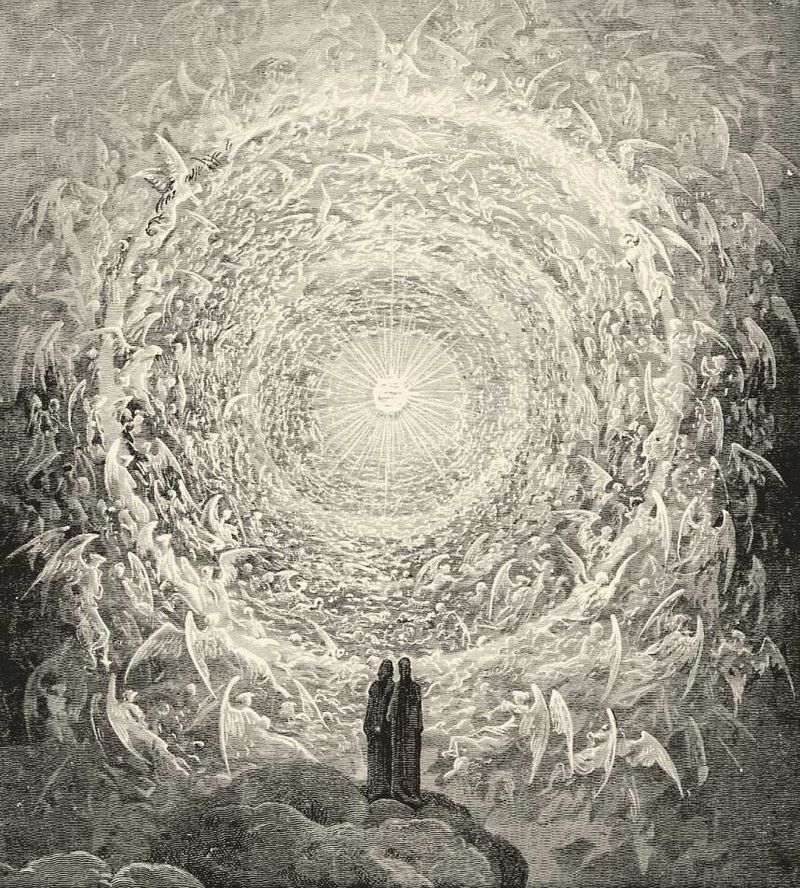
The spheres of Paradiso are associated with the planets of our solar system and a particular virtue is ascribed to each :
Moon – represents temperance; place of those who are good in heart but could not complete their vows.
Mercury – represents love of fame, those who did good works but for glory and fame remain here.
Venus – planet of carnal love, grip of strong material attractions.
Sun – symbol of God’s illuminating grace, ultimate wisdom.
Mars – courage
Jupiter – justice
Saturn – moderation and restraint
8th heaven – of faith, hope and divine love. Ladder of contemplation from Saturn reaches up here.
9th heaven, Crystalline – the fastest sphere and the furthest of the material heavens; time, space and causality start here.
10th sphere, Empyrean – the Essence which is beyond space, time and matter. “It is the infinite sea to which everything flows” writes Dante.
Dante observes that the level of happiness increases as he ascends the heavenly spheres.
In the bliss of reaching the Empyrean he comes to know the Truth; the stage where the eternal happiness and absolute felicity awaits the human soul.
Salvador Dali beautifully visualizes the spiritual scene where Dante is crowned by Beatrice in the Empyrean as he utters the following verse :
E’n la sua voluntade è nostra pace.
(And in his will we find our peace.)
(Paradiso III)
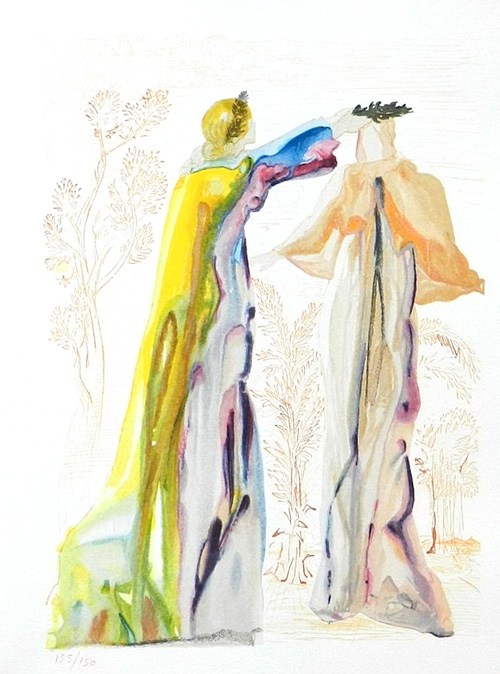
In an instant of total illumination Dante sees the vision of Divine Essence in the Empyrean…

The verse he wrote in that eupohoric state became one the most read verses of Divine Comedy over the past 700 years :
But already my desire and my will
were being turned like a wheel, all at one speed,
by the Love which moves the sun and the stars.
(Paradiso XXXIII)
Duygu Bruce







